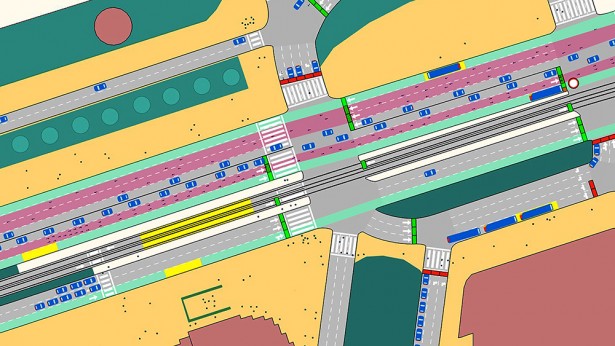New Aimsun release focuses on post-covid mobility planning
First published in Intertraffic Innovation News - June 29, 2020
 The latest version of Aimsun Next mobility modelling software has a series of features to help planners understand the movement of pedestrians and cyclists. As cities struggle to manage a return to work for citizens and a reduction in public transport capacity due to social distancing regulations, version 20 of Aimsun Next software allows planners to model a multitude of possible future scenarios, such as studying the impact of pop-up bike lanes, or increased physical distance at a busy crossing.
The latest version of Aimsun Next mobility modelling software has a series of features to help planners understand the movement of pedestrians and cyclists. As cities struggle to manage a return to work for citizens and a reduction in public transport capacity due to social distancing regulations, version 20 of Aimsun Next software allows planners to model a multitude of possible future scenarios, such as studying the impact of pop-up bike lanes, or increased physical distance at a busy crossing.
The new pedestrian simulator is included free of charge in Aimsun Next and lets mobility engineers model the movement of unlimited numbers of pedestrians on pavements, their interaction with traffic at crossings, and the boarding and alighting process at public transport stops. Advanced non-lane-based microsimulation predicts the behaviour of two-wheel vehicles sharing lanes and filtering through a queue of four-wheel vehicles. This realistic simulation of micromobility, such as bicycles, e-bikes and scooters, gives transport planners an unprecedented insight into the movement of all modes of transport, allowing them to optimise their network and help get people where they need to be as efficiently as possible.
“Aimsun Next 20 focuses on modelling pedestrians, bicycles and the interaction between passengers and public transport vehicles and is a huge step towards our final goal of modelling individuals and multimodal mobility,” explained Aimsun’s global head of product management Paolo Rinelli. “Given that transport planners are having to completely rethink their policies post-Covid, this is the perfect tool at the perfect time to help them do that.”
Companies in this article
Aimsun











